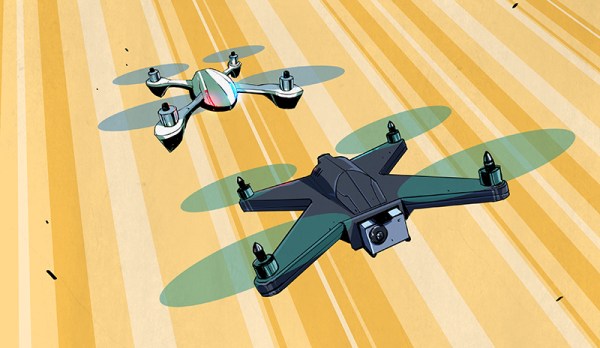The mass media are funny in the way they deal with new technology. First it’s all “Wow, that’s Cool!”, then it’s “Ooh, that’s scary”, and finally it’s “BURN THE WITCH!”. Then a year or so later it’s part of normal life and they treat it as such. We’ve seen the same pattern repeated time and time again over the years.
![The mass media tech story cycle. Our apologies to Gartner. Curve image: Jeremykemp [ CC BY-SA 3.0 ], via Wikimedia Commons](https://hackaday.com/wp-content/uploads/2016/04/media-tech-cycle-800px1.png)
The latest piece of technology to feel the heat in this way is the multirotor. Popularly referred to as the drone, you will probably be most familiar with them as model-sized aircraft usually with four rotors. We have been fed a continuous stream of stories involving tales of near-misses between commercial aircraft and drones, and there is a subtext in the air that Something Must Be Done.
The catalyst for this piece is the recent story of a collision with a British Airways plane 1700ft over West London approaching London Heathrow. The ever-hyperbolic Daily Mail sets the tabloid tone for the story as a drone strike, while the BBC’s coverage is more measured and holds a handy list of links to near-miss reports from other recent incidents. This incident is notable in particular because a Government minister announced that it is now believed to have been caused by a plastic bag, and since there is already appropriate legislation there was little need for more. A rare piece of sense on a drone story from a politician. The multirotor community is awash with plastic bag jokes but this important twist did not seem to receive the same level of media attention as the original collision.
Are multirotors unfairly being given bad press? It certainly seems that way as the common thread among all the stories is a complete and utter lack of proof. But before we rush to their defence it’s worth taking a look at the recent stories and examining their credibility. After all if there really are a set of irresponsible owners flying into commercial aircraft then they should rightly be bought to book and it would do us no favours to defend them. So let’s examine each of those incident reports from that BBC story.
Continue reading “Debunking The Drone Versus Plane Hysteria”





















